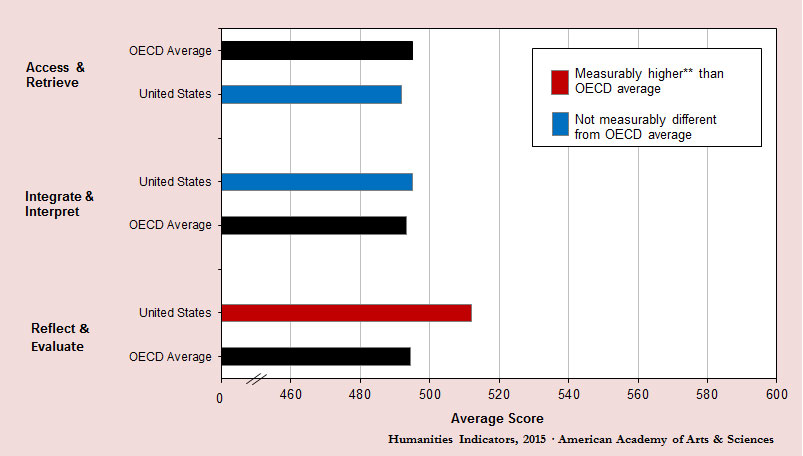I-03e: Average Scores on International Reading Literacy Subscales, 2009*

* Average scores for additional countries are provided in the supporting table.
** At the 5% significance level.
Source: Organization of Economic Cooperation and Development (OECD), OECD Data Explorer, http://pisadataexplorer.oecd.org/ide/idepisa/, accessed 2/23/2017. Data analyzed and presented by the American Academy of Arts and Sciences’ Humanities Indicators (www.humanitiesindicators.org).
“The Program for International Student Assessment (PISA) is an international assessment that measures 15-year-old students' reading, mathematics, and science literacy every three years. First conducted in 2000, the major domain of study rotates between mathematics, science, and reading in each cycle. PISA also includes measures of general or cross-curricular competencies, such as collaborative problem solving. By design, PISA emphasizes functional skills that students have acquired as they near the end of compulsory schooling. PISA is coordinated by the Organization for Economic Cooperation and Development (OECD), an intergovernmental organization of industrialized countries, and is conducted in the United States by NCES. The next assessment is in 2015.” (Excerpted from the National Center for Education Statistics’ online PISA overview). The PISA scoring scales for reading literacy (and also math and science literacy) range from 0 to 1,000.

